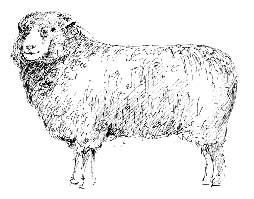Leicestershire
UNSPEAKABLE ∗ AN ENGLISH SPORT ∗ RED CHEESE
The Fox – part of England’s heritage.
LEICESTERSHIRE FOLK
Robert Bakewell ∗ Jenny Pitman ∗ C.P. Snow ∗ Joe Orton ∗ Graham Chapman ∗ Stephen Frears ∗ Sue Townsend ∗ Gary Lineker
Hunting
‘The Unspeakable in Pursuit of the Uneatable’
OSCAR WILDE
Leicestershire is hunting country, home to some of the most famous English hunts, including the QUORN and the BELVOIR, both based around Melton Mowbray. Fox-hunting originated in England in the 14th century, when Edward I was known to own a pack of hounds, although the earliest recorded mention of a fox-hunt comes from 1534, when a Norfolk farmer attempted to chase a fox with his hounds as a means of pest control.
Fox-hunting really began to develop in the late 17th century, when it became necessary to control the growing fox population in order to protect sheep and poultry farms, and in 1660 the first formal hunt was established at Blisdale, in Yorkshire.
In the 19th century, the leisured aristocracy and gentry took up fox-hunting as a country pastime. Jumping fences, which had been erected as a result of various enclosure acts, became an essential part of the sport. Chasing across difficult country is highly skilled and is the origin of the sports of steeple-chasing, point-to-point racing and National Hunt racing.
Various ceremonial elements were introduced in the 18th and 19th centuries. At the meet, before the hunt moved off, a ‘stirrup cup’ of port or sherry was offered, as given by Scottish Highlanders to their departing guests. After a successful hunt new members were ‘blooded’ by having the blood of the fox smeared across their faces.
The most important member of the hunt is the Master of Foxhounds or MFH, who runs the hunt, organises the finances and has the last say over all matters while out in the field. The Huntsman is responsible for directing the hounds during the hunt and blows the horn to communicate with the hounds, the hunt followers, and the ‘whippers-in’, whose job is to keep the pack together and prevent hounds from straying. The role of the hunting ‘whippers-in’ is the origin of the ‘Whips’, who are responsible for discipline in political parties. The professional hunt members wear scarlet coats so that they can be easily seen during the hunt, while the hunt followers traditionally wear black.
Belvoir Castle
The Quorn is the second oldest English hunt and was formed in 1696 by Thomas Boothby of Tooley Park. It takes its name from the village of Quorn, where the hounds were kennelled from 1753 until 1904. The hunt is now based at Kirby Bellars, near Melton Mowbray.
The Belvoir was founded in 1750 and is based at Belvoir Castle, home of the Dukes of Rutland. The hounds are kennelled nearby at Woolsthorpe-by-Belvoir.
Hunting with hounds was banned in 2005.
Red Leicester
RED LEICESTER cheese is a mellow, slightly flaky, russet-coloured cheese that gets its rich colour from the inclusion of Annatto, a natural dye extracted from a South American bush. It is traditionally made in a large cartwheel shape.
Red Leicester cheese was first made on Sparkenhoe Farm at Upton, near Hinckley, in 1745 by George Chapman. The Chapmans stopped making it in 1875 as there was no money to be made from cheese at that time, and in 1956 Red Leicester actually made in Leicestershire ceased production, the last being produced by dairy farmer Mr Shepherd, of Bagworth. However, in 2005 the Leicestershire Handmade Cheese Company began making genuine Red Leicester at Sparkenhoe Farm once again.
Well, I never  knew this
knew this
about
LEICESTERSHIRE FOLK
Robert Bakewell
1725–95
ROBERT BAKEWELL was born into a farming family at DISHLEY, near Loughborough, and grew up during the Industrial Revolution, when workers began moving off the land into the new towns. People were no longer able to grow their own food and the inefficient smallholdings left behind were unable to supply the growing demand for milk and meat. Bakewell travelled around Europe studying other farming methods and returned to Dishley to put into practice what he had learnt.
Until then, sheep had been bred mainly for wool and cattle mainly for leather, and the animals were thin and under-nourished. Bakewell introduced irrigation, and set aside some of his land for growing grass and crops to feed his animals during the winter months, so they could fatten up to provide good meat. He also improved the condition of his cattle by building winter stalls that were raised above ditches, so that manure fell into them and could be gathered for fertiliser, and the cattle did not have to lie down in their own waste.
He also began to separate male and female animals, allowing them to breed only at certain times and putting together those with the most desirable characteristics. The resulting sheep were known as New Leicesters, and they were big, with good-quality fleece and plenty of fatty mutton, which was popular at that time.
Bakewell noticed that Longhorn cattle seemed to eat less but put on more meat than other breeds, so he inbred them to enhance these qualities. Soon he began to hire out his prize rams and bulls to other farmers and quickly became a wealthy man.
For a while, Robert Bakewell’s farm was the most famous farm in the world. He was visited by farmers and producers from all over the world who wanted to learn his breeding techniques. His methods enabled a small number of efficient farms to provide enough food for the populous towns, and the same methods are still practised everywhere by farmers today.
Leicester City football club are known as the Foxes, because – in addition to the county’s fox-hunting associations – on the map the county of Leicestershire resembles, appropriately enough, a fox’s head.
JENNY PITMAN, first woman to train a Grand National winner (Corbiere, 1983), was born in HOBY, near Melton Mowbray, in 1946.
Born in Leicester
C.P. SNOW (1905–80), physicist and novelist, who coined the phrase ‘corridors of power’.
JOE ORTON (1933–67), playwright, whose black comedies included Entertaining Mr Sloane, Loot and What the Butler Saw.
GRAHAM CHAPMAN (1941–89), Monty Python actor and writer.
STEPHEN FREARS, film director (My Beautiful Launderette, 1985, The Queen, 2006), born 1941. In 1987 directed Prick Up Your Ears about fellow Leicesterarian Joe Orton.
SUE TOWNSEND, author, born 1946. Her Adrian Mole series was set in Leicester.
GARY LINEKER, England footballer, born 1960. Never sent off throughout his career, which began at Leicester City. Now TV presenter.
Pop group SHOWADDYWADDY were formed in Leicester in 1973. In 1976 they reached No. 1 with ‘Under the Moon of Love’.


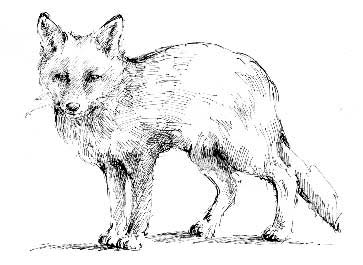

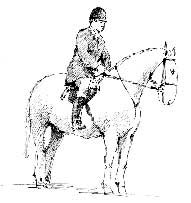
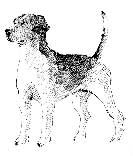
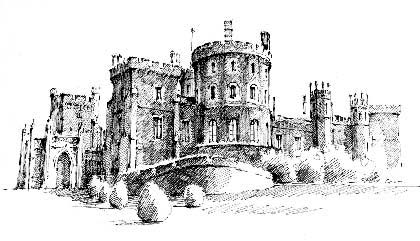

 knew this
knew this